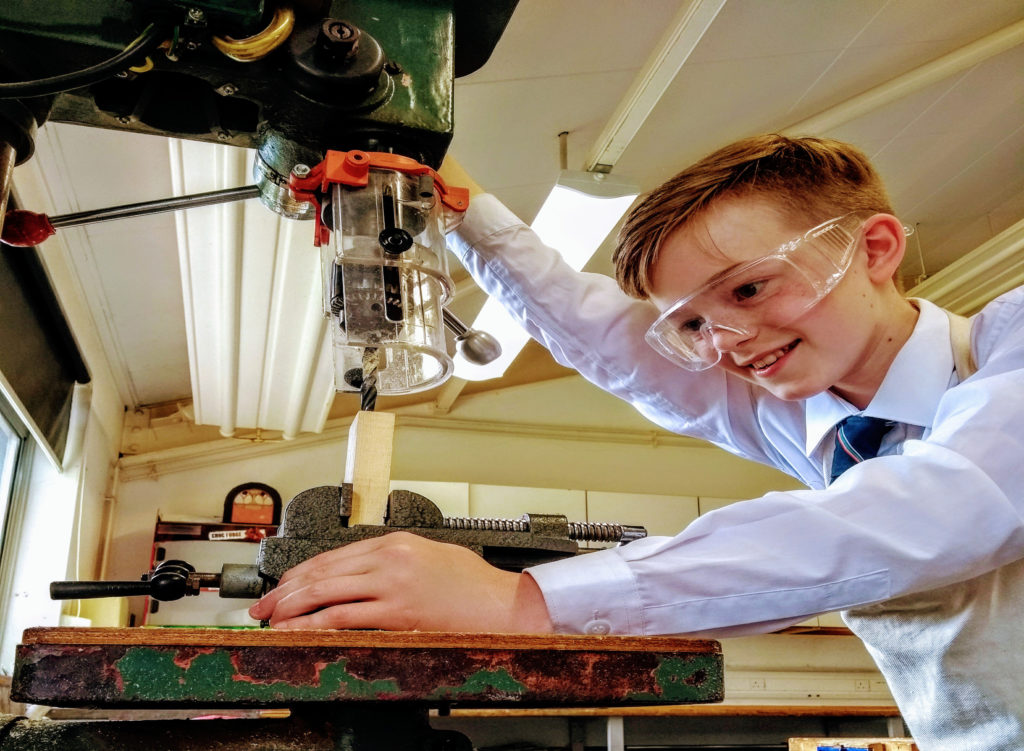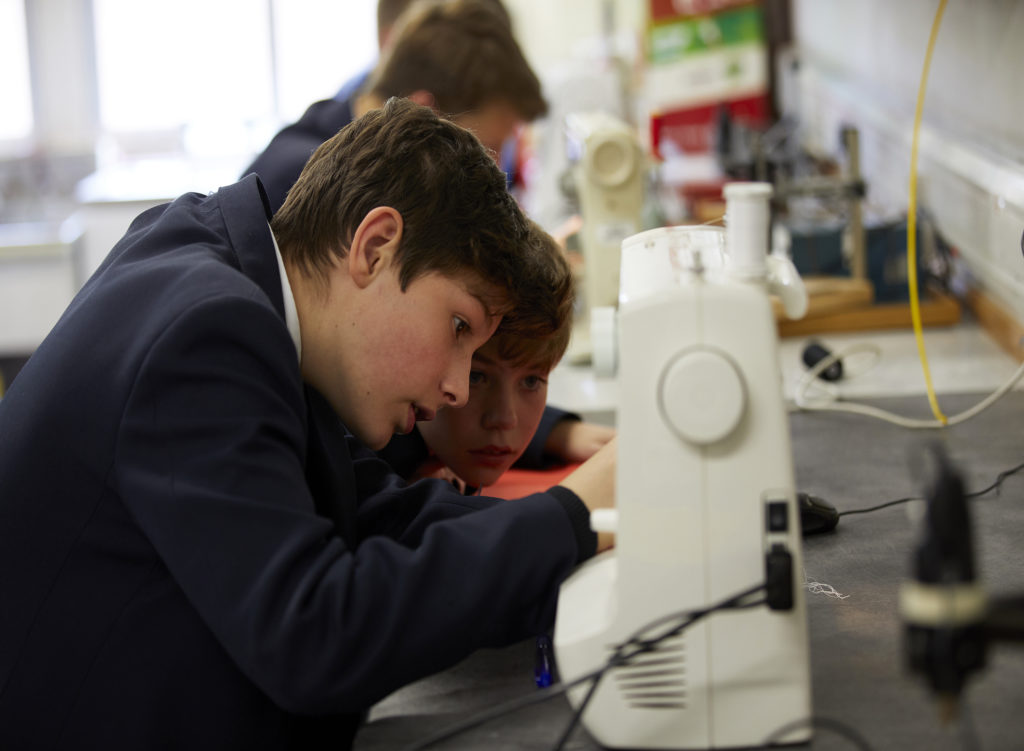Design & Technology
Head of Department – Mrs H Jones
Design and Technology is an inspiring, rigorous and practical subject.
Using creativity and imagination, pupils draw on other subjects such as Mathematics, Science, ICT and Art to design and make products that solve relevant problems whilst considering both their own and others’ needs.
High quality Design and Technology education makes an essential contribution to the creativity, culture, wealth and wellbeing of the nation and through evaluation of products students develop a critical understanding of their impact on daily life and the wider world.
KEY STAGE 3
All students study Design and Technology at KS3 through practical projects and digital workbooks in the following areas:
- Resistant materials (wood, metal, textiles and plastics)
- Computer aided design and manufacture (CADCAM)
- Electronics (circuit design / building and programming)
- Food and nutrition
- Engineering
The TBGS Design and Technology department comprises of three teachers with different specialisms to cater for the broad range of Design and Technology on offer. We offer varied and challenging Schemes of Work to inspire students across all D & T areas in line with the National Curriculum. We aim to teach students to be critical thinkers, creative problem solvers, who have a strong work ethic due to their love for the subject. This set of skills can be applied in all their subjects, their wider community and in life itself.
KEY STAGE 4 (GCSE)
Examination board – EDEXCEL
“Learn with both your head and hands”
― Thomas A. Edison
In Design and Technology students learn: critical thinking, problem solving and resilience alongside practical and designing skills.
Course content assessment – 50% NEA (coursework) and 50% Written exam
In year 10, students broaden their knowledge of the core materials and processes through theory lessons and small practical projects. The core areas consist of:
- Paper and board
- Metals
- Timbers
- Textiles
- Systems
- Polymers
- Mechanisms
As well as learning how to design to meet the needs of the user and our ever-changing world, students will also learn about how to manufacture a product commercially and making it a commercial success. An emphasis on sustainability and environmental factors is at the heart of everything we do.
Towards the end of year 10, students start the NEA (Non-examined assessment) and will complete it in the February of year 11:
- Students will undertake a project based on a contextual challenge released by Edexcel, a year before certification;
- This will be released on June 1;
- The project will test students’ skills in investigating, designing, making and evaluating a prototype of a product;
- The task will be internally assessed and externally moderated;
- The marks are awarded for each part as follows:
- Investigate – this includes investigation of needs and research, and a product specification (16 marks);
- Design – this includes producing different design ideas, review of initial ideas, development of design ideas into a chosen design, communication of design ideas and review of the chosen design (42 marks);
- Make – this includes manufacture, and quality and accuracy (36 marks);
- Evaluate – this includes testing and evaluation (6 marks).
Once the NEA is completed, students will begin revision and examination practice ready for the final written exam. The exam is 1h 45 minutes, and comprises of two sections:
- Section A: Core. This section is 40 marks and contains a mixture of different question styles, including open-response, graphical, calculation and extended-open-response questions. There will be 10 marks of calculation questions in Section A;
- Section B: Material categories. This section is 60 marks and contains a mixture of different question styles, including open-response, graphical, calculation and extended-open-response questions. There will be 5 marks of calculation questions in Section B.
KEY STAGE 5 (A LEVEL)
Examination board – OCR
Design Engineering is focused towards engineered and electronic products and systems; the analysis of these in respect of function, operation, components and materials, in order to understand their application and uses in engineered products/systems that have commercial viability.
Design and technology is an inspiring, rigorous and practical subject. Learning about design and technology at A level strengthens learners’ critical thinking and problem-solving skills within a creative environment, enabling them to develop and make prototypes/products that solve real-world problems, considering their own and others’ needs, wants, aspirations and values.
This course requires students to identify market needs and opportunities for new products, initiate and develop design solutions, and make and test prototypes/products. Students will be taught; how a product can be developed through the stages of prototyping, realisation and commercial manufacture.
The aim of this course is to excite and engage learners with contemporary topics covering the breadth of this dynamic and evolving subject. It will create empathetic learners who have the ability to confidently critique products, situations and society in every walk of their lives now and in the future.
WHERE CAN THESE QUALIFICATIONS TAKE ME?
The study of design and technology can lead to future careers in product design, engineering, architecture, fashion and graphic design. It will develop your design and thinking skills to open up a world of possibility, providing you with the tools to create the future.






